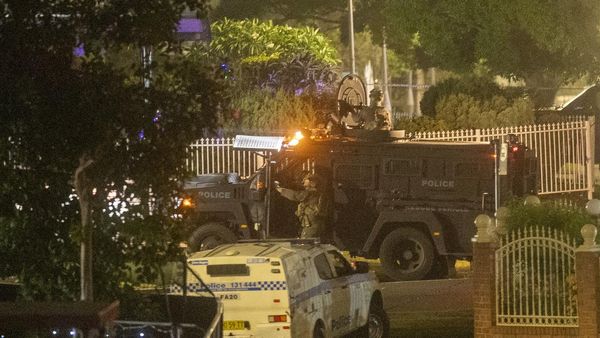As the second AFLW Grand Final of 2022, and the sixth in total approaches, debate is raging over who, Brisbane or Melbourne, will raise the cup aloft on Sunday afternoon.
From the two most dominant teams across the season, there is a key statistic for each that indicates their control of games, and ultimately, an ability to win.
Brisbane — laying tackles inside 50
The Brisbane Lions have been the most dangerous side in attack this season. They have got their forward combination down to a fine art, but above all it is every player's willingness to work hard defensively as well as offensively that has been the key to the side's success.
In each game this season, Brisbane has registered a double-digit tackle-inside-50 count, and should it do so again on Sunday, it will become the first team in competition history to lay 10 or more tackles inside 50 in every game across the season.
As a result, the Lions have set a new record for average tackles inside 50, laying an average of 17 per game, beating their own record of 15.8 from last season.
Courtney Hodder leads the way with a total of 34 to date, and another eight Lions have laid 10 or more across the season. This amounts to 36 per cent of Lions to play at least one game throughout season seven laying double-digit tackles, 7.4 per cent more than any other side.
While those tackle inside 50 numbers are vital, and an indicator of Brisbane having a game on its own terms, they do not stand alone, instead they are a contributor of a wider attacking onslaught.
By using that pressure to trap the ball in attack, Brisbane has taken a shot of goal from nearly half of its inside 50 entries — the most in the competition this season — and is kicking a goal from 20.5 per cent of those entries.
While these numbers alone are high, they also come with the fact that the Lions are generating an average of 36.7 inside 50s per game, the third-highest average in competition history.
This combination has resulted in an average of 18 shots on goal and 52.5 points per game, making this season's Lions the second most prolific attacking side since the competition began.
But all of it is based upon that ground level pressure, that willingness to not just get the ball forward but keep it there, and that comes down to Brisbane's record tackle inside 50 numbers.
Melbourne — an elite handballing game
Melbourne has captivated the footy world this season with its elite handballing game around the contest to launch the rest of its ball movement.
It is not just the want to handball around congestion, but it is the efficiency in which Melbourne's players execute those handballs. They are quick and perfectly placed to moving teammates on the outside, meaning those on the receiving end rarely have to break stride to take the ball cleanly.
Averaging a competition record of 108.6 handballs per game from another record 244.7 disposals, Melbourne works to maintain possession and methodically use those handballs in close before transitioning out to careful kicks once on the outside.
Ruck and rover combination Lauren Pearce and Eliza West lead the way, registering 61.6 per cent and 68.8 per cent of their respective disposals as handballs.
Just twice this season has Melbourne registered fewer than 100 handballs in a game, one of which was its only loss of the season, round four against Brisbane.
While for some teams excessive handballs suggest panicked, poor ball use, for the Demons it indicates them getting the game on their terms, and in the process, they have registered a disposal efficiency of 62.5 per cent — the fourth-highest in the competition this season.
In using the ball in such a way, the Demons are able to remain somewhat unpredictable.
While opponents will be aware that this is how Melbourne wants to move the ball, the speed and unpredictability of the actual outlet that will turn that possession in close into an attacking foray is very hard to defend. Once Melbourne gets the ball to the outside they tend to use it quickly, moving toward its deep and varied forward line.
The added bonus for Melbourne of this style of play is the way it forces opponents to play contested footy when they don't necessarily want to.
Overall, 55.1 per cent of the possessions the Demons have conceded this season have been contested, indicating how tough and tight it is to win the ball against them. In addition to this, Melbourne is conceding the fewest disposals of any side, allowing its opposition just 186.8 disposals per game.
All of Melbourne's strong defence and prolific attack is launched by its clever, efficient handball game around the contest. That efficiency has come from repetitive, dedicated training as a unit, and time spent together as a playing group to understand one another's running patterns and quirks on the field.
These key statistics — Brisbane's tackles inside 50 and Melbourne's neat handballing — will be a vital indicator in Sunday's Grand Final as to which team is on top and in control. If either side can take that away from its opponent, that will go a long way toward the ultimate victory.







